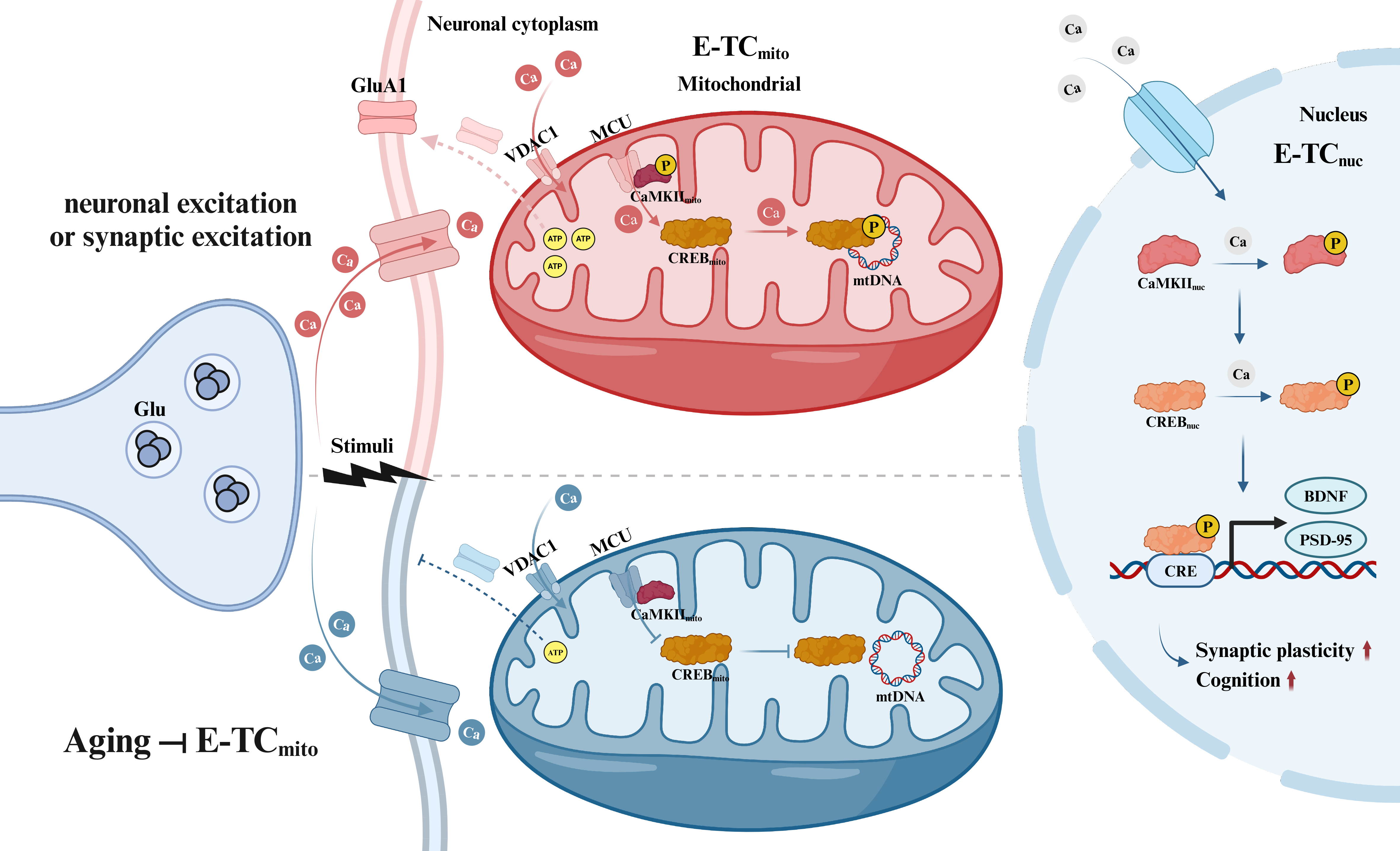fig1
Figure 1. Model of excitation-dependent mitochondrial gene expression (E-TCmito) in aging and young neurons. During periods of neuronal or synaptic excitation, calcium is taken up by mitochondria in neurons. This process activates CaMKII in the mitochondrial membrane and CREB in the mitochondrial matrix (E-TCmito), triggering transcription of mitochondrial DNA for ATP production. The resulting ATP supports surface expression of GluA1 at the synapse. This mechanism is distinct from conventional excitation-dependent nuclear gene transcription (E-TCnuc). Research has demonstrated that aging significantly reduces the efficiency of E-TCmito engagement during mitochondrial calcium uptake, consequently impairing mtDNA transcription, diminishing ATP production, and reducing receptor surface expression [Created in BioRender. Xiaoxing, L. (2025) https://BioRender.com/yz6uzzm]. E-TCmito: Excitation and excitation-dependent mitochondrial gene transcription coupling; CaMKII: calcium–CaM-dependent protein kinase II; CaM: calmodulin; CREB: Ca2+/cAMP response element-binding protein; ATP: adenosine triphosphate; GluA1: glutamate receptor 1; E-TCnuc: excitation-dependent nuclear gene transcription coupling; mtDNA: mitochondrial DNA; VDAC1: voltage-dependent anion channel 1; MCU: mitochondrial calcium uniporter; BDNF: brain-derived neurotrophic factor; PSD-95: postsynaptic density protein 95; CRE: cAMP response element.








